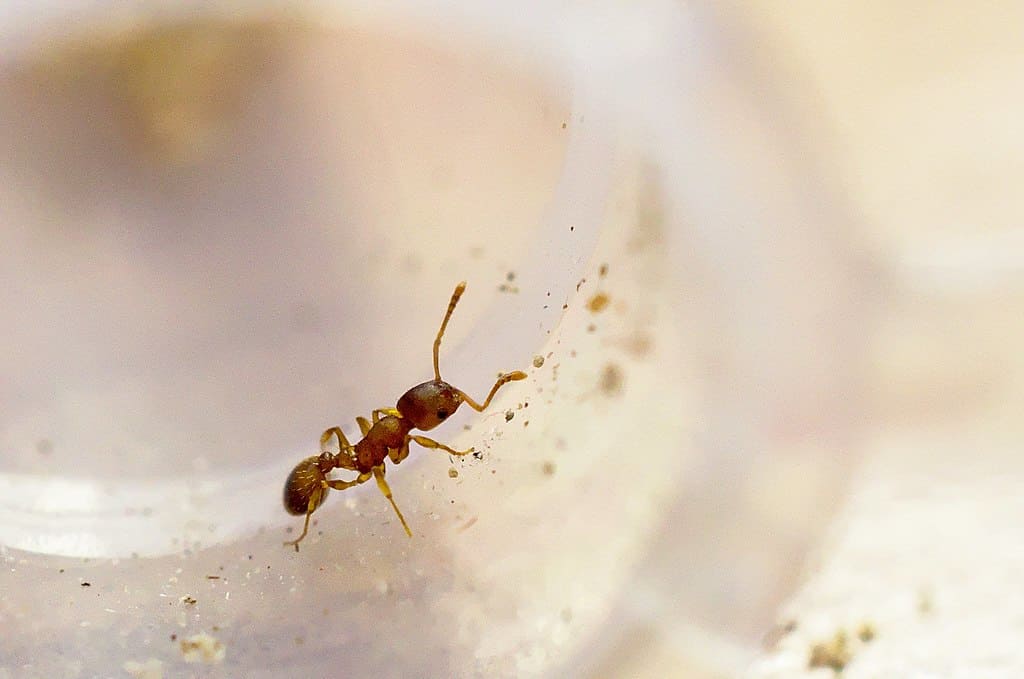Getting infected by a parasite isn’t usually a good thing, but there can be some exceptions to the rule. Scientists found that ants infected by a tapeworm live several times longer than their otherwise uninfected peers. The researchers don’t know exactly why this happens, but proteins released by the parasite offer some clues.

The researchers, led by Susanne Foitzik at the Johannes Gutenberg University in Germany, focused on the ant species Temnothorax nylanderi. It’s a woodland bark-inhabiting species but occasionally nests under stones or inside acorns. The ant is very small but aggressive and can be mainly found in Central and Western Europe countries.
Ants of the species sometimes collect woodpecker feces and take them to the nest to feed on larvae. If there are tapeworm eggs in the feces, they hatch with an infection that can increase the lifespan of the ants up to three times, according to the study. The infected ants barely leave the nest, leaving the chores for the uninfected workers.
“For the infected individuals themselves it seems positive,” Juliane Hartke, a member of the research team, told New Scientist. “They don’t need to do anything; they’re still being fed, but what we do see is that the whole colony suffers.”
Why does this happen?
The tapeworm doesn’t see the ant as its ultimate habitat. Instead, it reaches its adult reproductive stage in the body of a woodpecker. As a result, the parasite has a strong incentive to ensure its temporary host, the ant, remains in good shape. This increases the likelihood of the ant being eaten by a bird once the tapeworm reaches maturity.
Once infected, the ants just remain in their nests and don’t move much, making them an ideal meal for woodpeckers. The birds eat them and the tapeworm larva hitch a ride inside the birds, where they mature. The woodpeckers then poop tapeworm-infected eggs, which ants then carry back to their nest. And the process starts all over again.
In the study, the researchers compared infected and uninfected ants, looking at protein levels in the ants’ hemolymph, which is the equivalent of an invertebrate‘s bloodstream, as LiveScience explains. They found that a significant portion of the proteins in the hemolymph originated from tapeworms, two of which are antioxidants.
Infected ants can live up to seven years, while uninfected ants can die within a three-year period, according to the study. Some other proteins could also explain why the infected ants can lay back and relax while the others do the work. One protein, vitellogenin-like A, found at high levels, is known to regulate divisions of labor in ants.
The researchers don’t know yet whether the tapeworm is intentionally manipulating the gene expression of ant proteins or if this is all an accidental by-product of the infection from the parasite. They plan to keep looking at the parasite’s proteins to better understand how they influence behavior, appearance, and longevity in ants.
The study hasn’t been peer-reviewed yet and it’s available here.









